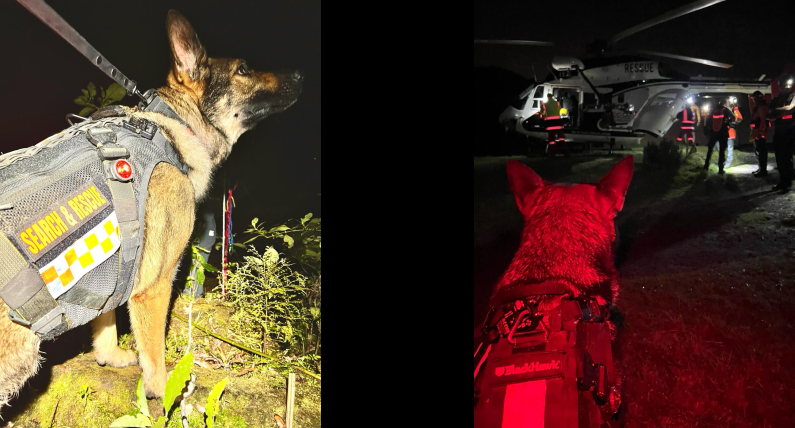
Tiny lights near Tauranga
Teamwork, tenacity and technology came together for a successful outcome in the search for a teenager lost in the Bay of Plenty bush.
“The activation call came from Police about 7.30pm and we deployed to the search area with very little information,” says Nic Hume of Tauranga Land Search and Rescue. “All we knew was that a ‘boy had gone walking with a dog’ and failed to return.”
Although the weather was relatively stable, it was late winter, so temperatures were dropping quickly. The missing person was not equipped to spend the night, and searchers were very concerned for his welfare.
Nic was part of a ‘hasty team’ intended to search the highest probability areas quickly and methodically. At the scene, they met with a police officer and an informant.
“We were given coordinates for the last known point of the missing person,” says Nic. His team headed off to search that area, which was off a different road and about 600 metres into thick bush. The team included a tracking dog and handler, so when the dog couldn’t find a scent, they queried the information. “Updated intelligence confirmed that particular location was from a well-meaning but incorrect assumption from the informant.” says Nic.
Further enquiries confirmed the correct location where the missing person had begun their walk, so the teams redeployed and began processing the last known point for clues. The dog quickly indicated a scent, which the team followed through thick, steep bush. Meanwhile, the missing person had kept walking to stay warm. The dog was able to track for about three kilometres, but it lost the trail around 3am.
“The temperature was continuing to drop, so when we lost the scent, we knew we needed to request a helicopter with night vision capability to improve the chances of finding the missing person quickly,” says Nic.
“VHF radio coverage was patchy considering the nearest repeater location, so we found ourselves using a combination of VHF, InReach satellite messages and mobile phone messages to communicate with the incident management team.”
Thirty minutes after arriving on-scene, the helicopter crew noticed a faint light from the missing person. The missing person’s quick thinking to shine the Bluetooth light from his headphones at the helicopter captured the crew’s attention. This enabled the helicopter crew to direct the field teams to the location of the light.
“We were close but couldn’t pinpoint the missing person. So, we asked the helicopter to move away, then used a sound search to find his exact location.” The missing person and the dog were both cold but otherwise unharmed. They were assisted by Nic’s team to the nearest road, concluding a successful multi-agency search and rescue operation.
Insights
Confirming intelligence may mean a short delay in tasking and deployment but can result in a more efficient search.
Using the PACE communication strategy enables search teams to operate in difficult locations. Primary – VHF radio via repeater. Alternate – InReach satellite. Contingency – Mobile phone. Emergency – Personal Locator Beacon.
Night Vision Goggles amplify the available light by thousands of times. Even the smallest light source can be detected from considerable distances. Probability of detection (POD) is increased on darker nights where small lights give more con-trast. POD is decreased by vegetation cover and high humidity, or larger particles in the atmosphere such as rain, dust, or smoke. After this operation, the Tauranga Land Search and Rescue group purchased a set of Night Vision Goggles to aid in future night searches.
Feature image: Search dogs during the operation. Courtesy Nic Hume
This story was originally published in the April 2024 issue of Link magazine.
